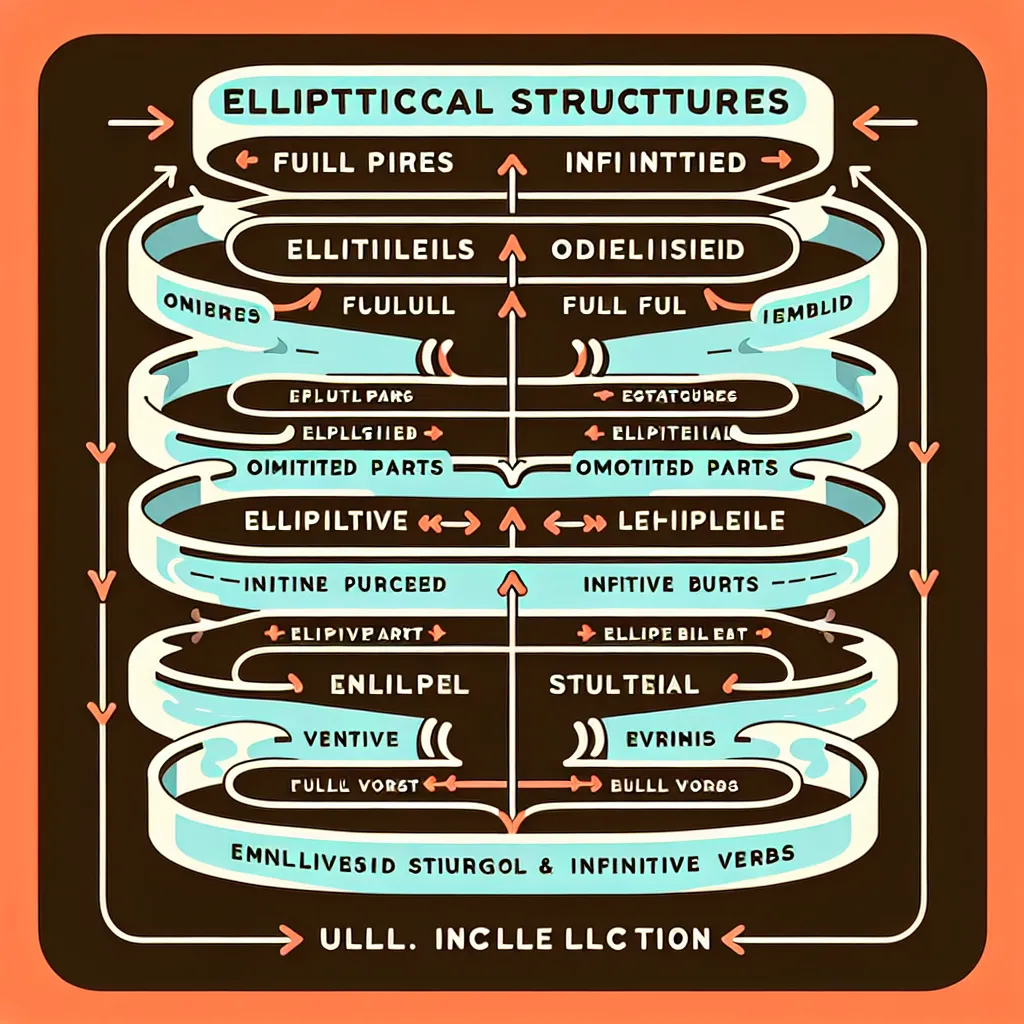Elliptical structures with infinitive verbs are a sophisticated grammatical feature that can significantly enhance your IELTS score when used correctly. These structures allow for concise and elegant expression, which is highly valued in both the writing and speaking sections of the IELTS test. Let’s delve into this topic and explore how you can effectively employ these structures to boost your language proficiency.
Understanding Elliptical Structures with Infinitive Verbs
Elliptical structures are sentences or phrases in which certain words are omitted because they can be understood from the context. When combined with infinitive verbs, these structures become powerful tools for expressing complex ideas succinctly. In IELTS, using such structures can demonstrate a high level of language control and sophistication.
Here are some examples of elliptical structures with infinitive verbs in context:
- “I don’t know how [to solve] this problem, but he might.”
- “She wants to travel the world, and I’d like [to travel the world] too.”
- “You should practice speaking English every day if possible [to practice speaking English every day].”
- “He’s not sure whether [to accept] the job offer or not.”
- “I’ll help you if you need me [to help you].”
In each of these examples, the bracketed parts are understood and can be omitted, creating more concise and natural-sounding sentences.

Grammar Rules and Usage in IELTS
Formula and Structure
The basic formula for elliptical structures with infinitive verbs is:
[Subject] + [Verb] + (Object) + [to + Verb] (implied but omitted)
It’s crucial to remember that the omitted part must be clearly understood from the context to maintain clarity.
Application in IELTS Writing
In IELTS Writing Task 2, using elliptical structures can help you achieve a higher score by demonstrating complex grammar usage. For example:
“While some believe that government funding should prioritize public services, others argue that investing in the arts is equally important. I tend [to believe] the latter.”
Here, “to believe” is implied and can be omitted, showcasing a more advanced level of English.
Application in IELTS Speaking
In the Speaking test, using elliptical structures can make your responses more natural and fluent. For instance:
Examiner: “Do you think it’s important to learn a foreign language?”
Candidate: “Absolutely. In fact, I’d encourage everyone [to learn a foreign language] if they have the opportunity.”
Enhancing Your IELTS Score with Elliptical Structures
To achieve a higher band score in IELTS, it’s essential to use a variety of grammatical structures accurately. Here’s how elliptical structures with infinitive verbs can contribute to different band scores:
-
Band 6: Basic use of elliptical structures, occasionally with minor errors.
Example: “I’m not sure how [to answer] this question, but I’ll try.” -
Band 7: More frequent and accurate use of elliptical structures.
Example: “While some prefer to study alone, I’d rather [study] in a group.” -
Band 8-9: Consistent and sophisticated use of elliptical structures, integrated seamlessly into complex sentences.
Example: “Despite the challenges inherent in learning a new language, the benefits far outweigh the difficulties, which is why I always encourage others [to learn a new language] when given the chance.”
Common Mistakes to Avoid
When using elliptical structures with infinitive verbs, be wary of these common errors:
-
Incomplete omission: “She likes to read books, and I like to [read books] too.” (Correct omission: “She likes to read books, and I [like to read books] too.”)
-
Mismatched verbs: “He doesn’t know how [solve] the problem.” (Correct: “He doesn’t know how [to solve] the problem.”)
-
Ambiguous context: “They asked if we wanted [to go], but we didn’t.” (This could be unclear if the context doesn’t clearly indicate what “to go” refers to.)
-
Overuse leading to choppy sentences: “I want [to travel], need [to study], hope [to succeed].” (While grammatically correct, overuse can lead to a disjointed writing style.)
-
Incorrect parallel structure: “She likes singing and [likes] to dance.” (Correct: “She likes singing and [to sing and] dancing.”)
Conclusion
Mastering elliptical structures with infinitive verbs can significantly enhance your performance in the IELTS test. By incorporating these structures into your writing and speaking, you demonstrate a sophisticated command of English grammar, which is crucial for achieving high band scores. Remember to practice using these structures in various contexts and to review your usage to ensure clarity and accuracy. As you prepare for your IELTS exam, challenge yourself to identify and create elliptical structures in practice essays and speaking exercises. With consistent practice, you’ll find that these structures become a natural part of your English expression, helping you to communicate more efficiently and eloquently in your IELTS test and beyond.